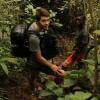I saw another thread asking about getting BirdNet (https://github.com/kahst/BirdNET) running on a Windoze machine, and thought I would expand on that question and ask what people are doing with LOTS of files that get generated by devices like AudioMoths ...
I know there is:
BirdNet: https://github.com/kahst/BirdNET
ARbimon: https://www.sieve-analytics.com/services (recently meged with Rainforest Connection, rfcx.org)
what else are people using for continuous, large-scale monitoring?
31 January 2021 1:23pm
Colleagues and I at the BTO have just launched the BTO Acoustic Pipeline - for the sound identification of high frequency species - bats, small mammals, and bush-crickets (focus on the UK and north-west Europe) - free to use up to a reasonable level. For more information see https://www.bto.org/pipeline.
2 February 2021 1:37pm
Would definitely check out @tessa.rhinehart 's wonderful spreadsheet collating all the different acoustic software in existence and their functionality.

Jamie Macaulay
Sea Mammal Research Unit Univ' St Andrews
4 February 2021 12:25pm
PAMGuard (www.pamguard.org) can analyse large datasets and has an excellent data management system. We use it in the marine bioacoustics world for analysis of long-term monitoring data.
I guess the positives of PAMGuard are that it is open source, very flexible, actively supported and funded. Work is also ongoing to make it more terrestrial friendly with new displays and an "air" mode. I've recently been using it for bat monitoring and it's working pretty well.
The disadvanatges of PAMGuard are that is has a steep learning curve and the GUI is starting to look a little dated.
Happy to help you ge started if you want to give it a go.
9 May 2021 2:49pm
Dear all, just would like to know your work flow (on the field, which equipment use?) regarding the utilization of bird net or other software for bioacoustic analysis.
All the best


















Stuart Newson
British Trust for Ornithology (BTO)